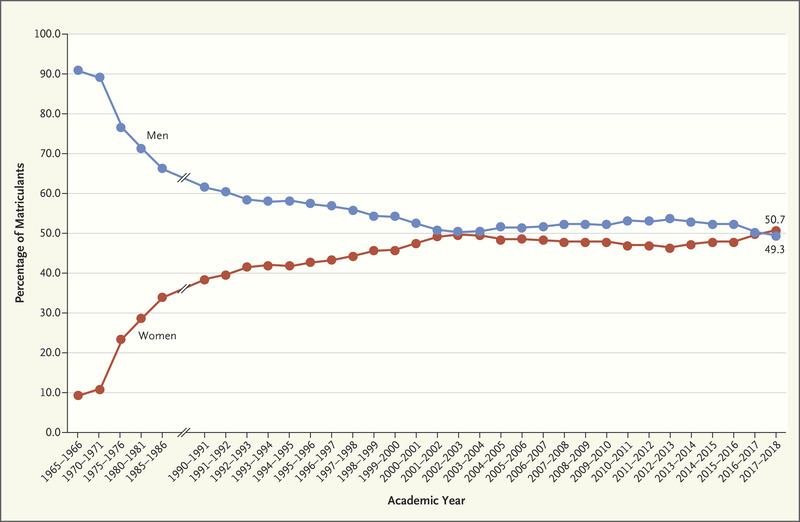The recent prominence of the #MeToo movement has shined a light at many places in our society where insidious or even obvious sexism against women has long gone unremarked. Even when noticed it’s just shrugged off as the way things are. In honor of this, #MeToo was named Person of the Year for 2017 by Time Magazine. Medicine is no exception to this pervasive problem. A very interesting recent essay in the New England Journal of Medicine examines why this is and what we could do about it.
It’s well documented women are vastly underrepresented in leadership positions in medicine, such as full professors and department heads. This is in spite of the fact the proportion of women to men in medical schools is roughly equal and has now been so for over 15 years. Last year the number of women admitted to medical school even slightly outnumbered men. This graph shows the trends over the last 50 years.

In spite of the steadily increasing proportion of women in medicine, the culture of medicine has not caught up. Indeed one can postulate the number of women in leadership positions will increase because typically these positions are held by physicians at mid-career or older; it may take time to generate women physicians with sufficient quantities of grey hair.
Your patients are rating you online: How to respond. Manage your online reputation: A social media guide. Find out how.



